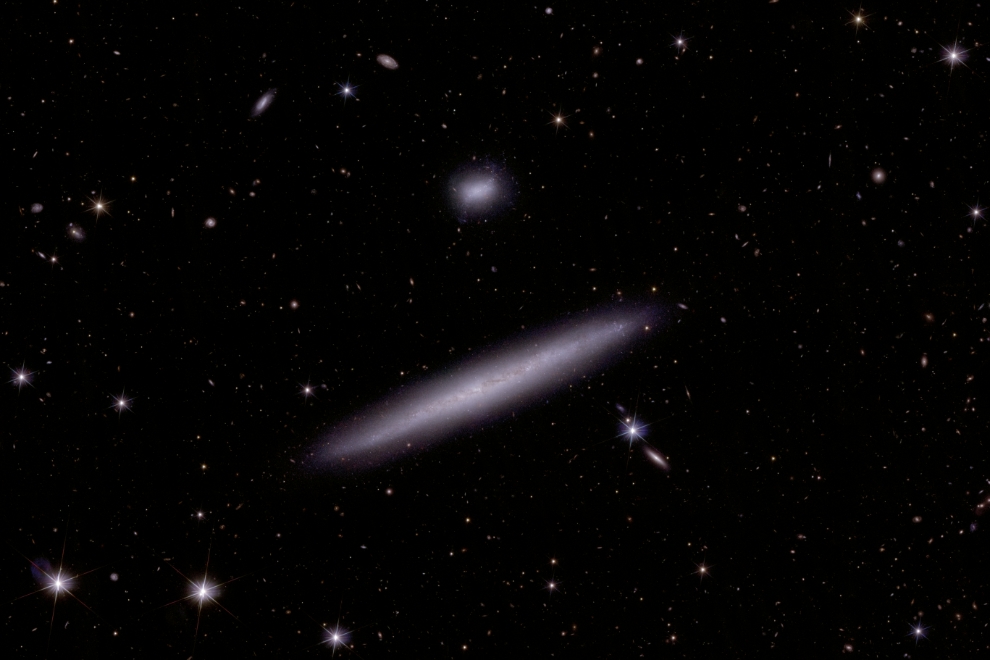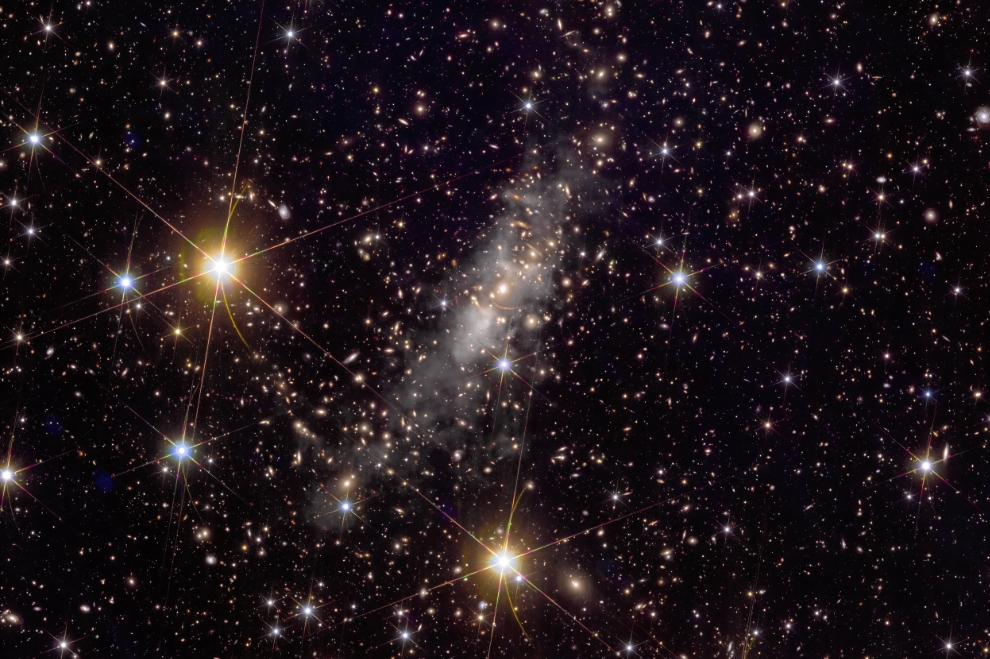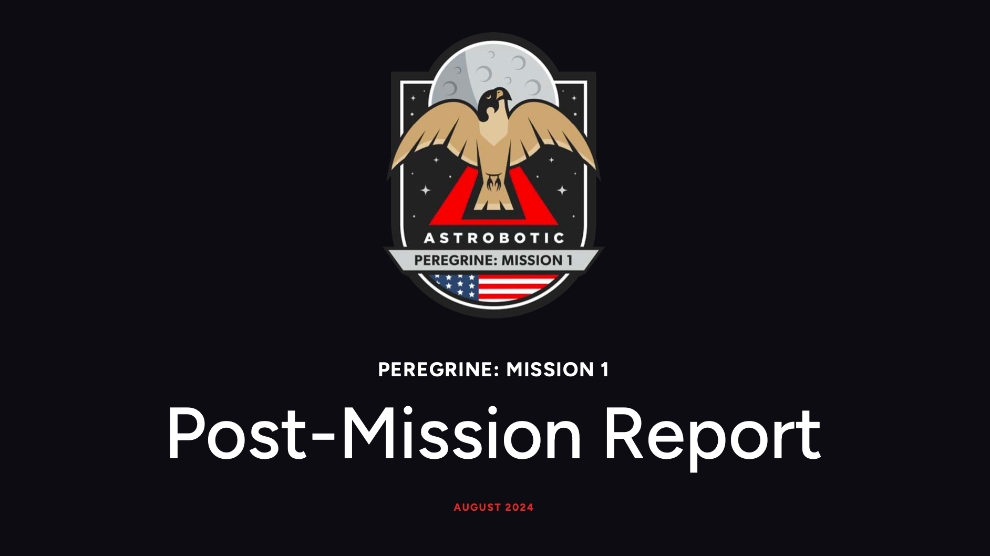The European Space Agency-led Euclid telescope collaboration, which includes a Canadian science team, released its first early release observations today (May 23) showcasing the capabilities of the dark matter mission.
Euclid launched on July 1, 2023 (Canada Day) aboard a SpaceX Falcon 9 at NASA’s Kennedy Space Center in Florida. Its goal is to survey the deep cosmos from a Lagrange point. The main, six-year survey will examine a third of the sky to show how dark matter and dark energy shaped the universe’s evolution.
The telescope is in good health and only facing minor issues – such as buildup of ice – and its images are at least four times sharper than what we can see from the ground, according to the consortium.
The new data release includes several images along with the first scientific data; 10 science papers are also in production and will soon be released. The early observations aimed at 17 science targets, ranging from gas and dust clouds to galaxy clusters.
To learn more about the Canadian contribution and progress with Euclid at large, SpaceQ spoke with University of Waterloo Euclid team members Mike Hudson – a professor who focuses on observational cosmology, galaxy formation and evolution – and Will Percival, who studies three-dimensional galaxy positions and is director of the Waterloo Centre for Astrophysics.
Hudson emphasized that alongside working with international Euclid members on numerous projects, the Canadian contribution is helping to analyze ground-based data in Hawaii from the Canada France Hawaii telescope, the Subaru telescope and the Pan-STARRS telescope. This work assists Euclid in learning the distance to certain objects for its weak lensing science. He said about 25 Canadians are on the team, including scientists at the faculty level at universities or who are based on national research laboratories.
Hudson’s focus, gravitational lensing science, is one of the key pillars of Euclid. The telescope team aims to use that to learn about dark matter properties, as well as the link between dark matter and galactic halos only visible by gravitational lensing. It allows the team to see “very faint structures in the universe that we cannot easily see from the ground, because of the brightness of the sky” due to reflections in Earth’s atmosphere, he said.
Ultra-diffuse galaxies are one of Hudson’s objects of interest, including work done by Euclid concerning the Perseus cluster first released in November (the image was available then, although the science paper is only just coming out now.)
“That shows us Euclid’s capability to find these objects, and then we will be able to study their dark matter properties … using Euclid’s weak lensing capabilities, (meaning) the distortion of these very distant background galaxies,” Hudson said.
The images are just a taste of what folks will get with Euclid, the scientists said. Percival said the big medium-term goal is Data Release 1: “This will be the first year of data taken, roughly a fifth of the survey, and it was set for release at the end of 2026. Everything is pointing to that, and all of our timelines and schedules point to that. We will see if we’re able to keep to them.”
The picture that will emerge from that survey will show a dynamic universe, Hudson said, as dark matter is expected to have changed across eras of cosmic time. Each stage of the survey will reveal more of that change, but Data Release 1 will give a sense of what to expect, he added.
“We don’t expect the structure to stay the same. We expect it to be evolving and changing as the universe expands, and so it’ll be really powerful to get,” he said of the survey. “You can think of it like a three-dimensional map of dark matter. So not only will it be big on the sky, but it’ll go very early universe.”
Euclid’s background development has been ongoing for decades, with a long-term effort in Canada to mentor Canadian students and post-graduates while working across a distributed international team. Percival said the relatively recent arrival of real-time messaging or video tools, including Slack and Zoom, have allowed for more real-time mentoring in the moment. “I’m getting more Slack messages than e-mails, quite often,” he said of the Euclid work.
The telescope, Percival emphasized, is designed to be “point-and-shoot,” with the team focusing on matters such as instrument response and holding off the slight ice forming on the telescope.
Hudson said other concerns will be making sure the data pipeline remains strong; it has been tested well with sample information over the years, but optimizations (and unexpected changes) will be required as the mission evolves, which is true of all science and development space missions. Additionally, students are developing software and testing it on the data available to “squish as many bugs as we can in our own personal code, to try to get it as smooth as possible, so that we’re ready to jump on that Euclid data when it when it’s released to us.”
The size of the collaboration is staggeringly large to the two Waterloo professors, as Euclid’s overview paper alone had more than 1,100 authors. “Operational challenges” as well as the opportunities for collaboration are immense in a project such as this, Hudson said, with the sheer size of the team giving him “a lot of confidence that we will be able to solve any problems that come up as time goes on.”
Percival said that aside from new images, the community should look carefully as the first papers about the data release. “It marks the end of the beginning; no longer do we just have images, or just have events to mark; we’ve actually got science coming out, so that is good.”
The science targets highlighted by ESA include:
– Abell 2390: A galaxy cluster with more than 50,000 galaxies, showing gravitational lensing. The science team is “studying how the masses and numbers of galaxy clusters on the sky have changed over time, revealing more about the history and evolution of the universe,” according to a statement.

– Messier 78: A group of young stars within interstellar dust, with Euclid’s infrared camera showing where the stars are formed along with young planets. “Scientists are using this dataset to study the amount and ratio of stars and smaller/sub-stellar objects found here – key to understanding the dynamics of how star populations form and change over time,” the statement said.

– NGC 6744: An active star-forming galaxy in which Euclid sought to show structure fboth in the spiral arms, as well as in small features like the dust. Science work here includes examining the links between star formation and gas and dust, along with examining star population within galaxies and the physics of spiral galaxy structures.
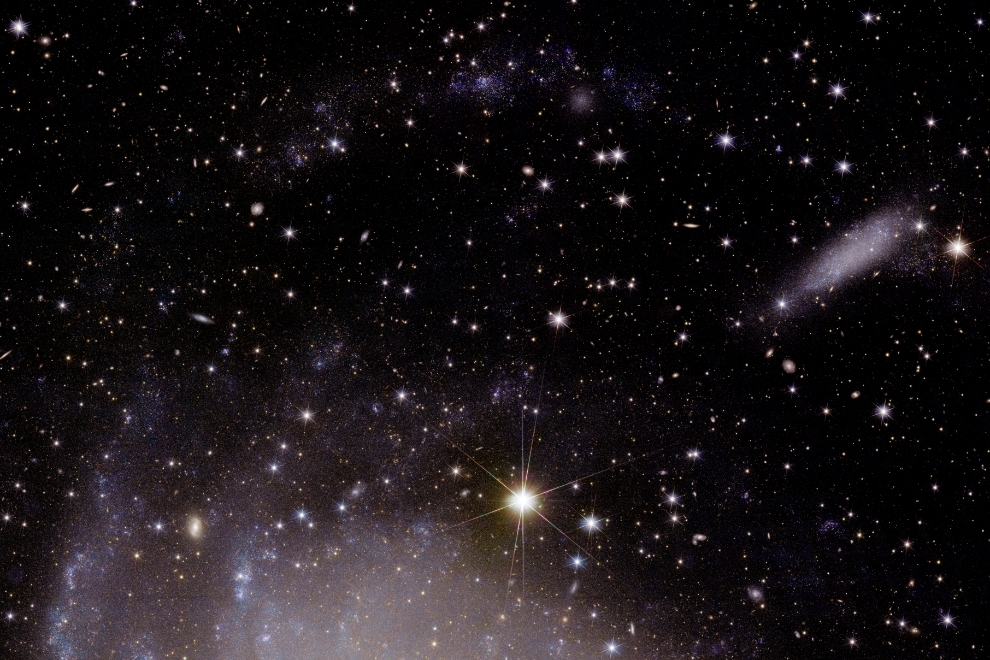
– Abell 2764: Euclid’s image showed the galaxy cluster along with the surrounding area, to showcase Euclid’s field of view. Also visible is a naked-eye star, V*BP-Phoenicis, which is in the foreground and in the Milky Way. While the star’s brightness (due to its proximity to Earth) produces a halo, Euclid’s design allows the halo to be minimized and “capture faint distant galaxies near the line of sight without being blinded by the star’s brightness,” the statement said.
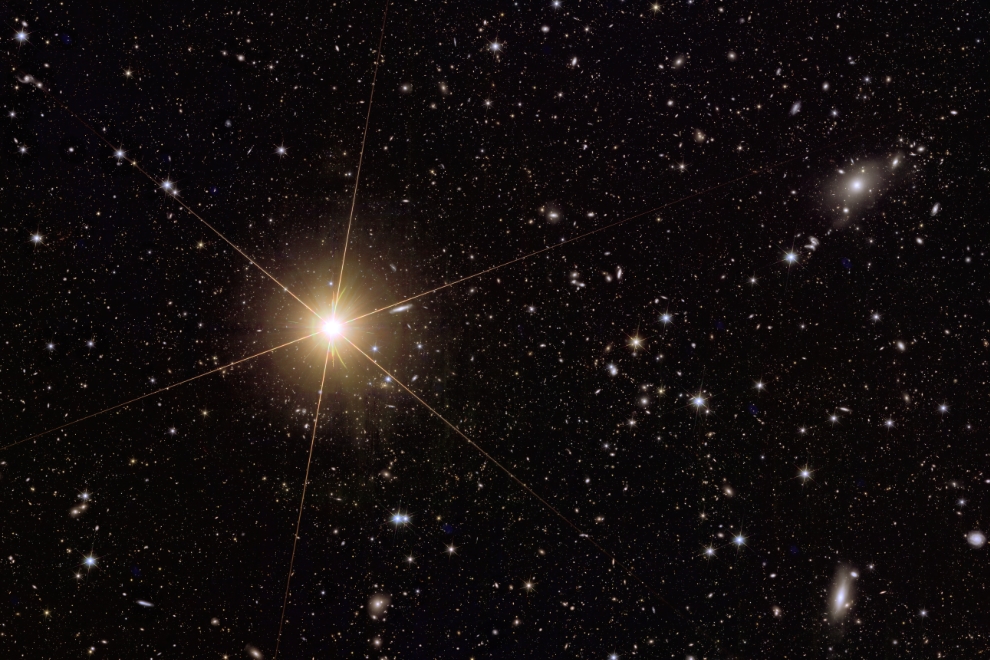
– Dorado Group: The galaxy group includes “beautiful tidal tails and shells seen as a result of ongoing interactions”, officials wrote, which are a good area for examining galaxy evolution amid dark matter. “Scientists are also seeking distant individual clusters of stars known as globular clusters to trace their galactic history and dynamics,” the statement added.
